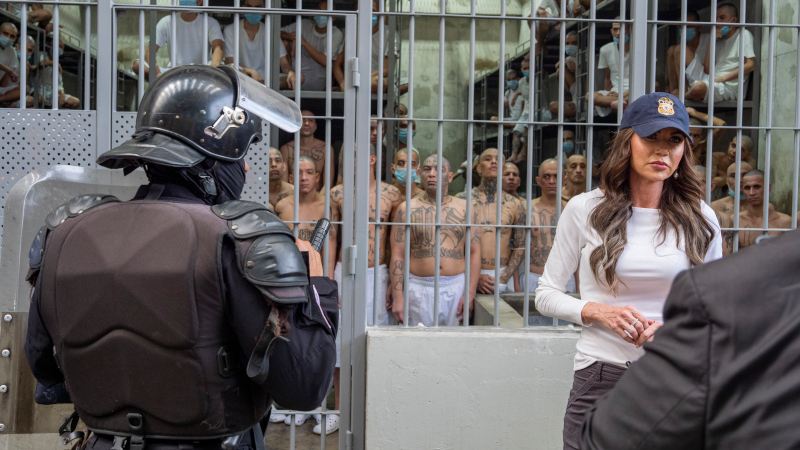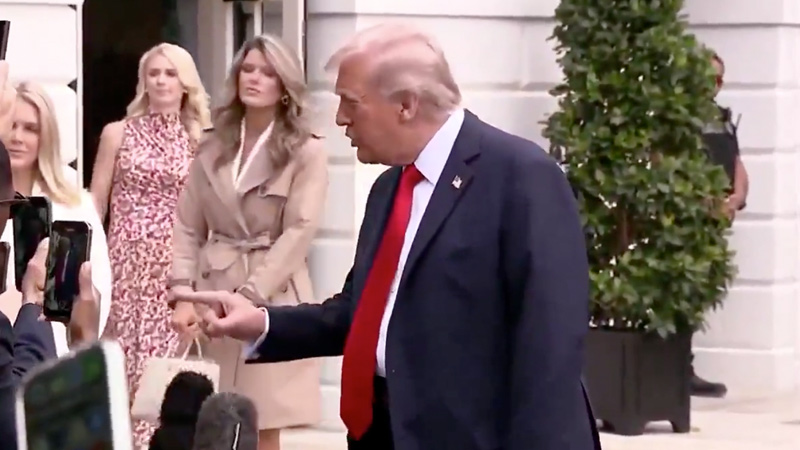 Image Credit: Alex Brandon-Pool/Getty Images
Image Credit: Alex Brandon-Pool/Getty Images Looming conflict in Venezuela and ongoing issues with Mexican cartels highlight the need for greater understanding of who and what the U.S. is actually dealing with.
Since President Trump took office, we have seen an escalation in tactics, most notably with the recent U.S. military strike on a Venezuelan vessel that saw 11 drug runners sent off-planet.
Additionally, POTUS has applied substantial pressure on the Mexican government, resulting in a roughly 50% decline in narcotics heading north and a 90% plunge in illegal border traffic.
Operation Hydra recently led to the seizure of approximately 316,440 kilograms of chemical precursors destined for a Sinaloa cartel-operated front company in Mexico. This was the most successful meth-related bust in U.S. history.
Venezuela: “A line has been crossed.”
Tensions in the southern Caribbean are rising as the U.S. strengthens its military presence near Venezuelan waters, escalating pressure on President Nicolás Maduro.
U.S. air and naval assets have been deployed to combat drug trafficking and safeguard regional maritime routes, with some already used in operations targeting illicit shipments, signaling potential for further confrontation with Caracas.
Maritime strikes signal an intensification in the war on drugs, and the entire situation is weighing on Maduro.
Venezuela has severely destabilized under Maduro, sending nearly 8 million inhabitants fleeing to the U.S. and neighboring countries in recent years.
As a result, Venezuela-based terrorist organization Tren de Aragua (TdA) is now operating in 11 Mexican states and throughout the U.S., presenting a significant threat to the Homeland.
Looming regime change in Venezuela?
Ioan Grillo is a journalist and author based in Mexico known for his extensive reporting on organized crime, the drug trade, and political violence in Latin America (LATAM). He has covered the region for more than two decades.
He has written several books on the drug war and its impact:
- El Narco: Inside Mexico’s Criminal Insurgency (2011)
- Gangster Warlords: Drug Dollars, Killing Fields and the New Politics of Latin America (2016)
- Blood Gun Money: How America Arms Gangs and Cartels (2021)
Grillo believes we could see regime change in Venezuela within the next year.
Maduro has served as the country’s president since April 2013. He succeeded his mentor, the late Hugo Chávez, after serving as his vice president.
Maduro’s leadership is deeply rooted in Chavismo, and under Maduro’s tenure, Venezuela has suffered severe economic turmoil, characterized by hyperinflation, widespread shortages of basic necessities, and a mass exodus of its citizens.
A recent U.S. intelligence memo stated that, while some Maduro-aligned individuals may tolerate or have indirect contact with TdA, there is no evidence Maduro directs or controls the gang’s operations.
Others disagree.
Independent journalist Tren de Aragua Tracker reports that TdA spread to almost every major American city following a raid in Venezuela in 2023. This indicates gang members either fled the country — or something more coordinated took place.
Mexican Cartels: What should the U.S. do? Will military strikes actually work?
Grillo highlights the difficulties of the military attacking cartels directly and also how cartels differ from other terrorist organizations, such as ISIS.
“These are very extensive organizations with billions in profits. There is a full on civil war in the Sinaloa cartel with thousands of deaths, murders, disappearances, arrests, and the cartel still has man-power to keep on fighting,” Grillo stated in a recent X space.
Cartels employ more than 175,00 people in Mexico, making them the fifth largest employer in the country.
“Killing a thousand operatives is only 1%,” Grillo asserted.
Civilian casualties could be extremely high and knowing who is who is also difficult.
Americans visiting or living in Mexico could also be in danger as a result of direct military action due to retaliation from cartels.
Since President Trump has essentially closed the southern border to illegals crossings and the drug trade is being impacted, Mexican cartels have started to shift their tactics.
“As Mexico’s two-decade war against drug cartels has worn on, cartel tactics have evolved. The groups have begun to focus not just on moving drugs to the United States but also on controlling territory inside Mexico, which has led to intensified inter-cartel battles and the groups’ increased militarization,” stated All Source News, chief intelligence officer at Artorias.
“Cartels now operate more like insurgent groups than purely criminal organizations, employing tactics such as improvised explosive devices, drones, and the recruitment of foreign mercenaries, specifically from Colombia. As of May 2024, cartels controlled about one-third of Mexico’s territory.”
The fentanyl crisis must be addressed with urgency.
Fentanyl is far more destructive than any other drug we’ve encountered in recent years.
More than 50,000 Americans die each year from synthetic opioid overdoses, with a staggering 76,000 deaths in 2023 alone.
According to the CDC, this brings the total number of overdose deaths—including those involving methamphetamine and cocaine—to over 130,000 annually.
To combat this epidemic, a multi-pronged approach is essential: increased street-level enforcement, stricter prosecution of traffickers, and sustained diplomatic pressure on China, which supplies raw materials to Mexico’s cartels.
At the same time, the U.S. must confront the “Iron River” — the steady flow of American firearms into Mexico.
A recent 60 Minutes investigation estimated between 200,000 and 500,000 firearms are smuggled south across the border each year. These weapons are a critical factor in the growing militarization of drug cartels.
“Analyzing cartel videos and photos regularly published on social media shows that all cartels have a propensity to utilize .50 caliber anti-materiel rifles such as the M82 or M95, which are manufactured in the United States,” All Source News reports.
The battleground has also changed.
“Air supremacy is no longer determined by fighter jets and helicopters,” Steven Willoughby, acting director of the C-UAS Program for DHS, recently testified to the Senate Committee on the Judiciary.
“In the last six months of 2024, over 27,000 drones were detected within 500 meters of the U.S. southern border.”
Mexico and the United States face serious problems, and drastic action is necessary to address these growing and persistent threats.
Many lives are at stake.
Trump Announces Plan to Send Troops to Poland as Specter of Total War Nears


